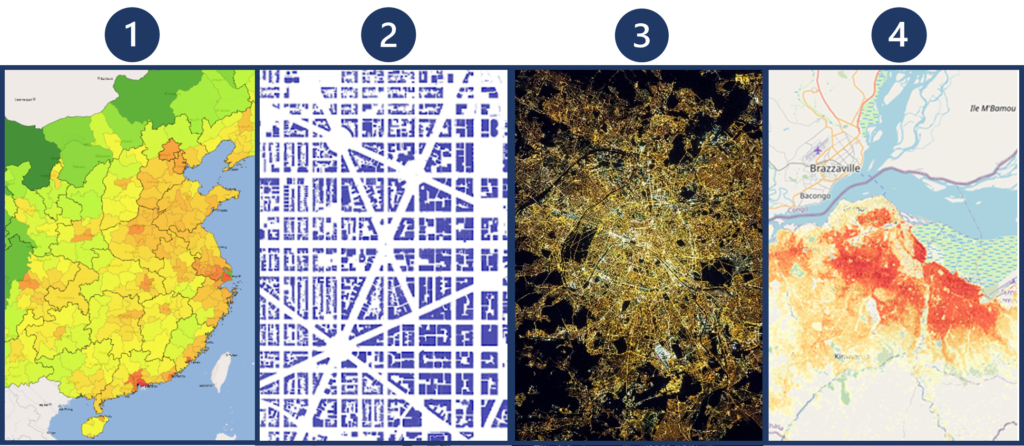
Where do we see population data?
Ideally, all countries worldwide would have regularly updated and easily accessible population data. For effective governance, countries require population data for essential population denominators [Figure 1], capturing the total number of people within a distinct area. The Covid-19 pandemic has highlighted how crucial population data is, as key indicators used to track the spread of the disease (e.g., confirmed Covid-19 cases per million people) and our efforts against it (e.g., the percentage of the population vaccinated for Covid-19) all require timely population numbers. In the wider sphere of epidemiology, the same or similar indicators are a requirement for monitoring many diseases, for instance to calculate prevalence or coverage of disease [Figure 2]. Both these calculations are used frequently in neglected tropical disease (NTD) programmes.

Many low-income countries (LIC) are often faced with a high burden of NTDs where accurate population data are often not readily accessible due to the lack of regular census. In addition, when censuses are completed, population data are typically only available when aggregated to large administrative areas. In the absence of accurate and up-to-date population sources, governments will typically apply an annual population growth rate (PGR) (the % at which the population grows annually) to the most-recent census population data in order to estimate current population data for that year. When the same annual PGR is used for many years, real-time changes in population figures can be lost. This increases the possibility of missing individuals in areas with large fluctuation in population i.e., through rapid growth or unexpected migration.
What about NTDs?
Within NTD Programmes, population data are used for creating treatment targets, planning for mass drug administration (MDA), completing World Health Organization (WHO) drug requests, and as denominator values for calculating prevalence and reported coverages [Figure 2]. Without access to accurate population data essential denominators cannot be calculated, affecting public health planning, estimation, and assessment of healthcare provisions. The result is too many, or too few, drugs delivered to areas of need.

National NTD programmes are often aware of the inaccuracies in population data yet, there are currently no alternative options or tools for NTD programme managers to evaluate official population data. Accurate population data are of critical importance, not only for NTD Programmes but also for wider governmental or non-governmental agencies. There is, therefore, a collective need for a mechanism to assess quality of population data to ensure population numbers are reflective of current populations.
It is needed to ensure treatments are provided to all those in need, particularly among smaller at-risk populations such as non-attending school aged children and women of reproductive age. It is even more pivotal in diseases with a focal distribution, centred on disease hotspots from where larger disease spread can occur. This is the case for schistosomiasis, where there is a movement towards focalised treatment in small areas with the aim of reaching WHO milestones for control and elimination.
What innovative solutions exist?
Recent advances in geospatial and machine learning methods may offer a solution. Paired with improved satellite and aerial imagery, research advances have led to the development of innovative solutions in obtaining accurate, modelled population data. The research group WorldPop have developed two publicly available models; a top-down approach which creates more accurate fine-scale distributions of existing population data, and a bottom-up approach which supplements existing population data with additional micro-census data to create a population estimate which reflects current situations in countries.
For the non-modellers, these population models take multiple data sources to inform statistical models which produce population estimates that reflect geographic realities e.g., growth in cities [Figure 3, Picture 4]. Data sources can include:
- Population data (recently collected or older census data) [Figure 3, Picture 1]
- Maps of towns/cities and building structures [Figure 3, Picture 2]
- Satellite images of road networks and night-time urban lighting [Figure 3, Picture 3]

How could we reconsider population data?
Modelled population estimates provide one solution but significant advancements to population data could be made with just a few considerations:
- Using standardised tools to analyse and discuss official population data; for example, those produced through the SAPIENs project.
- Using modelled population estimates provide an alternative source of population data which are informed by current geographic realities.
- Sharing learnings and knowledge between sectors in the use of modelled population estimations when implementing health intervention programmes.
- Developing partnerships across health intervention programmes, National Offices of Statistics, and United Nations Population Fund (UNFPA) to ensure standardisation of population data are used across entities, and collaborating to leverage shared programme reach, relationships, and funding sources to improve population data.
To reach the critical milestones outlined in the WHO 2021-2030 NTD Roadmap, accurate population data will be vital. Inaccurate population data are not solely an issue for NTD Programmes, and its effects can be seen across the scientific community. Any programme, project, or figure, which is reliant on population data for planning, implementing, or calculating the impact of programmes will subsequently find issues. It is crucial for individuals to regard population data with open minds, with this we can truly understand the issues with official population data and reconsider mechanisms to identify solutions for inaccurate population data in health programmes.

Comments